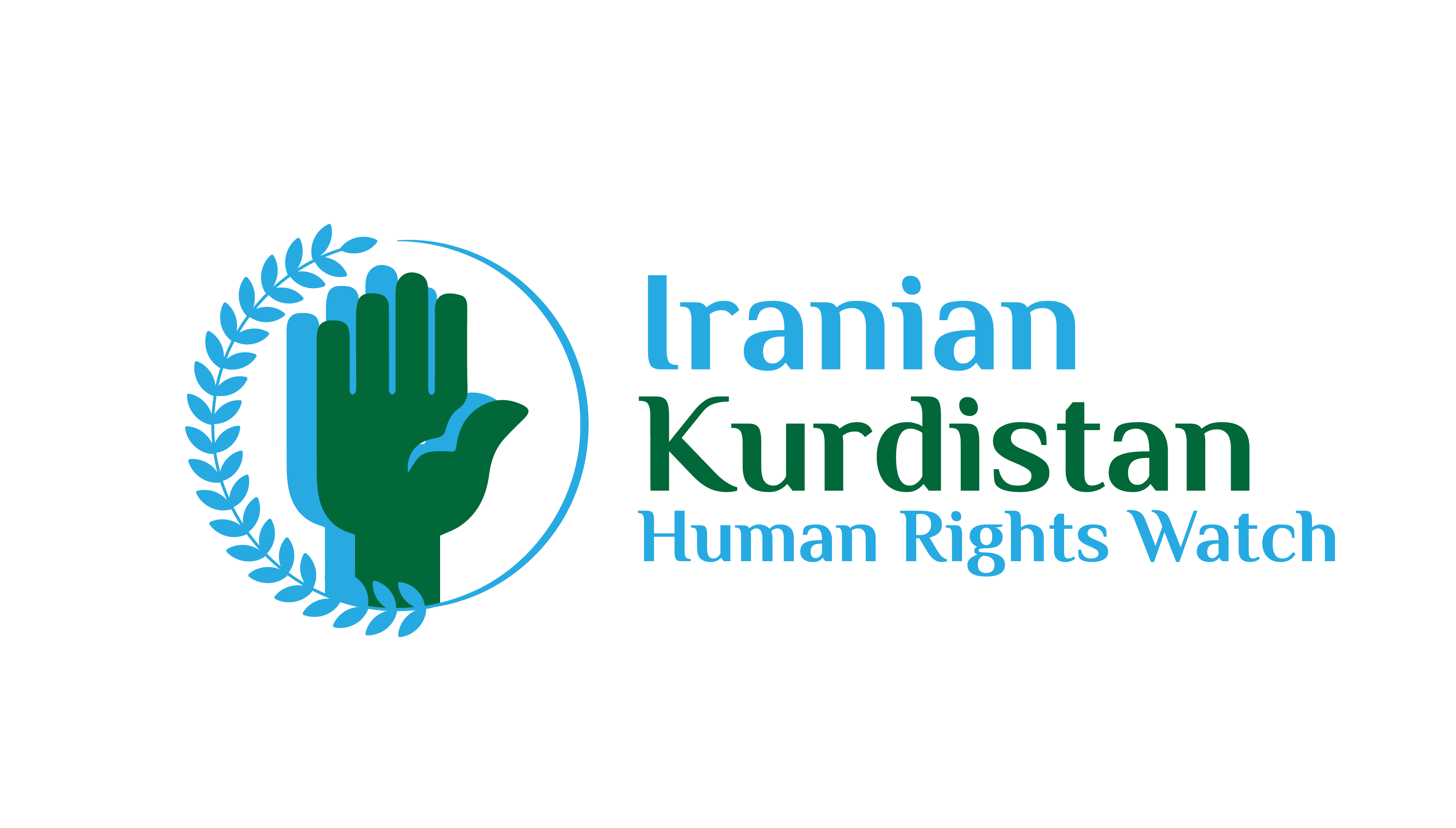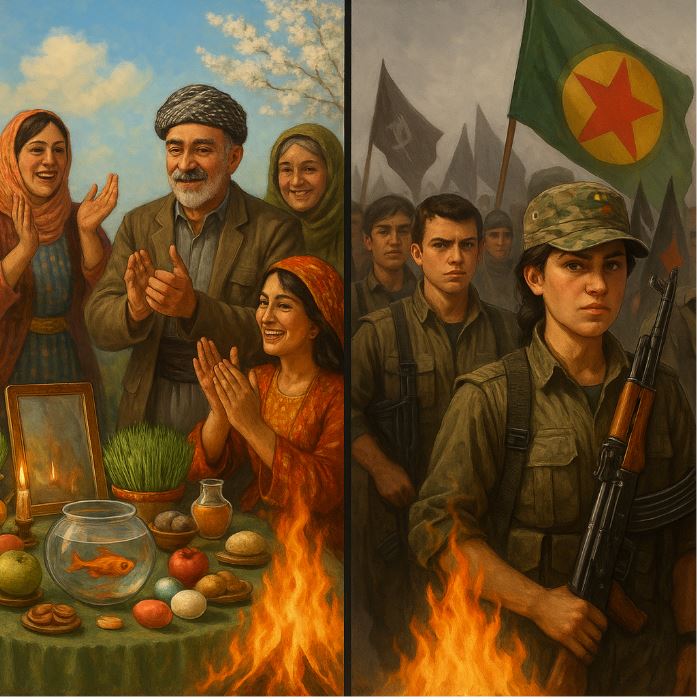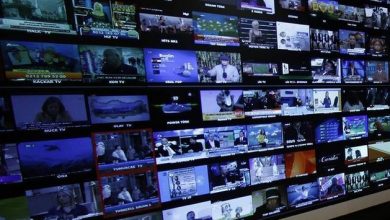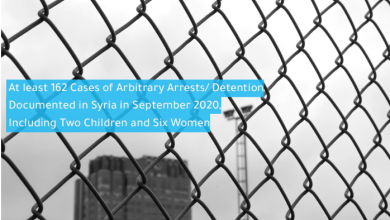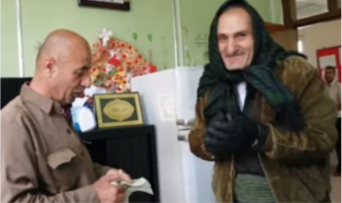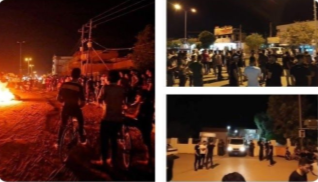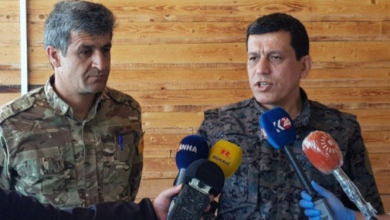What the Kurdish, Azeri, Persian, and other Iranian peoples celebrate during Nowruz is life, friendship, family gatherings, and communal joy
Nowruz, a festival deeply rooted in the history of the Iranian land and a shared heritage for all Iranian ethnicities, including Kurds, Persians, Lurs, Baluchis, Turkmens, and Azeris, is a ritual for rebirth, reconciliation, renewal, affection, and a fresh start for both humanity and nature. Nowruz is part of Iranian civilization, not a local or ethnic custom. Nowruz is the common ground for all Iranians worldwide and does not belong to a single ethnicity or religious movement. It is precisely this civilizational and universal status that has made it a target for distortion, appropriation, and misuse by opportunistic political currents today. Their actions stem not from an interest in Nowruz or a devotion to a specific ethnicity, but rather from their opposition to the unity of Iranians and the symbols of this unity, leading them to create crises and tensions.
In recent years, armed groups such as PJAK, Komala, and the Democratic Party, which originate from paramilitary and terrorist discourses, have attempted to appropriate Nowruz and distort its concepts to create an ideological, violent, and armed image of this cultural tradition. In their camps and the mountains of the Kurdistan Region, they hold ceremonies under the name of “Nowruz” that resemble military parades, armed displays, and partisan declarations more than the popular celebration of Nowruz. In these events organized by armed groups, there is no sign of peace, tranquility, affection, friendship, or efforts to improve human relations. Children and adolescents in military attire, chanting warmongering slogans, displaying images of armed leaders, and exhibiting violent symbols have no connection whatsoever to the spirit of Nowruz. These distortions not only do not reflect the culture of the Kurds but also betray the thousands-year-old traditions of the people of Iranian Kurdistan and the region. It goes without saying that these armed groups inherently have no connection to the Kurdish people. The majority of the victims of these groups have been and continue to be Kurds. Their members consist of deceived Kurds who were misled and seduced under the guise of claiming Kurdish rights, falsely believing that society could be built and politics could be practiced with weapons.
Meanwhile, Pan-Turkist movements, influenced by the policies of the Turkish government and the anti-Kurdish discourse of neo-Ottomanism, view Nowruz with a security-oriented and exclusionary perspective. Nowruz has been historically suppressed in Turkey, and opposition to it has always been coupled with opposition to Kurdish cultural expressions because it is not Turkey’s national, traditional, and civilizational celebration. “The fact that the President of Turkey – albeit with the collaboration and groundwork of some internal nationalist movements – has fallen into the delusion of ‘appropriating Nowruz’ and audaciously claims the registration of the Nowruz celebration under the name of the ‘imaginary Turkic world,’ and further declares the dear and magnificent Tabriz – a part of the body and one of the inheritors of the ancient culture of greater Iran – as part of his country’s intangible heritage,” shows how empty-handed Turkey is! This is because Turkey has always sought to appropriate symbols of Iranian civilization, and the issue of Maulana Jalaluddin Balkhi has been repeated this time in the Nowruz affair. Incidentally, Turkey’s behavior proves which country and civilization Nowruz belongs to. Internal Pan-Turkists, instead of valuing Nowruz as part of Iranian culture, either try to trivialize it or, using nationalist narratives, attempt to separate it from Iranian identity and describe it as part of the “Pan-Turkic” identity. This is while Nowruz does not belong to any particular party or group but is a celebration for everyone, from Tehran to Sanandaj, from Urmia to Shiraz, from Tabriz to Tabriz. Nowruz has no connection to “ethnic discussions.”
What the Kurdish, Azeri, Persian, and other Iranian peoples celebrate during Nowruz is life, friendship, family gatherings, and communal joy. The distance between the Nowruz of the Iranian people and what the political movements residing in the mountains and camps of the Kurdistan Region present as “revolutionary Nowruz” is immense. They use the fire of Nowruz to warm their weapons, while the people desire the warmth of friendship and unity from this fire. The fact that groups such as PJAK, Komala, and the Democratic Party have turned Nowruz into a tool for reproducing violence, recruiting child soldiers, and promoting their sectarian policies is a threat to the cultural identity of the Kurdish people and all Iranians. Confronting this distortion is a duty for cultural activists, human rights organizations, the media, and even the people themselves. The identity of Iranians, and consequently the Kurds, has no connection to armed and violent movements, and PJAK, PKK, and Komala are exploiting Nowruz for their sinister goals.
The hateful ethnic symbols and slogans, the vulgar behaviors, the threats against others with uniform batons, and the transformation of every collective ceremony, whether national, ancient, religious, or sectarian, into a rally for ethnic and political hate speech, are not in the interest of the Iranian nation or those ceremonies. The common enemy of Nowruz and the unity of Iranians are the “Pans” – Pan-Turkists, Pan-Kurds, Pan-Arabs, and any other “Pan” ideology that prioritizes ethnicity over the national unity of Iran! False and artificial ethnic and tribal conflicts are rejected and have no connection to the reality of Iranian society. Divisive and “ethnicizing social relations” are the goal and approach of nationalist movements, targeting Iran and its people.
It is evident that the celebration of Nowruz is an ancient, national, and proud celebration for Iranians and does not belong to any specific ethnicity or tribe. All Iranians, with any local language and religion, are part of the spiritual geography of this celebration. Nowruz is not only a celebration of life but also a testament to the continuity of civilization and the historical memory of a nation. Let us not allow this testament to become a plaything for violent individuals who are loyal neither to Kurdistan nor to Iran, but only to their partisan interests, the logic of weapons, and the principle of terror.
Dr. Ali Farahmand- Managing Director of Iranian Kurdistan Human Rights Watch
